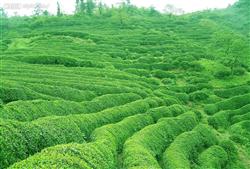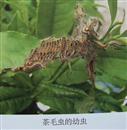Tea planting technology: how to improve tea quality and tea output?

How to improve the quality and output of tea? Please introduce methods to improve tea quality tea output can refer to the following methods: first, fertilization time. In spring, summer and autumn, when the new shoots of tea sprouted and grew one bud and one leaf for the first time, spray it in the early morning, evening or cloudy day on a windless sunny day, spraying 2 or 3 times a week. Spray until the leaves drip. Second, the proportion of fertilizer. The ratio of N, P, K is mainly N, P, K, and the proportion of micro-fertilizer is 4 ∶ 1 ∶ 1. The proportion of micro-fertilizer is based on the principle of what tea plant lacks and what to make up. Third, the concentration of fertilization. The concentration of fertilizer is related to the variety of fertilizer and weather conditions. According to the test, urea is 0.5%, calcium superphosphate 1%, potassium sulfate 0.5%, zinc sulfate 50~100ppm, iron molybdate 20~50ppm. If the concentration is too high, it is easy to produce fertilizer damage, otherwise it will not have an effect. Fourth, the combination of many things. It can be combined with pest control, sprinkler irrigation and plant growth regulators, saving labor and easy to realize mechanization. Chemical properties of fertilizers and pesticides. Acidic chemical fertilizers should be mixed with acidic pesticides, while alkaline chemical fertilizers should be mixed with alkaline pesticides so as not to produce chemical reactions and precipitates, so as to prevent the fertilizer and drug effects from counteracting each other. Fifth, use biological pesticides to control diseases and insect pests. The use of biological pesticides to control tea plant diseases and pests is a safe, reliable, pollution-free, pollution-free, low-cost and high-effective choice, such as Bt emulsion, cyanobacteria, Beauveria bassiana, agricultural antibiotics and plant antibiotics. Click to get more tea planting techniques click to get more flower planting techniques
- Prev

Tea planting techniques: how to spray foliar fertilizer for tea trees?
How do tea trees spray foliar fertilizer? Please give the method tea tree spraying foliar fertilizer can refer to the following methods: 1. Use urea 0.5-1%, ammonium sulfate 1%, calcium superphosphate 1-2%, potassium sulfate 0.5-1%. 2. The application time should be the vigorous growth of new shoots, the cloudy day when 1 bud and 1-2 leaves unfold, evening or morning. Every time.
- Next

Tea planting techniques: what are the diseases and insect pests of tea trees in summer?
What are the diseases and insect pests of tea trees in summer? Please introduce and control methods in summer tea garden focuses on the control of tea cake disease and tea bud blight, and the focus of insect pests is tea caterpillar and tea inchworm. Tea cake disease mainly harms new shoots and tender leaves, the disease spot is sunken on the front of the leaf, the back is steamed bread-like protuberance, and produces gray-white powder spores. Guard against.
Related
- Fuxing push coffee new agricultural production and marketing class: lack of small-scale processing plants
- Jujube rice field leisure farm deep ploughing Yilan for five years to create a space for organic food and play
- Nongyu Farm-A trial of organic papaya for brave women with advanced technology
- Four points for attention in the prevention and control of diseases and insect pests of edible fungi
- How to add nutrient solution to Edible Fungi
- Is there any good way to control edible fungus mites?
- Open Inoculation Technology of Edible Fungi
- Is there any clever way to use fertilizer for edible fungus in winter?
- What agents are used to kill the pathogens of edible fungi in the mushroom shed?
- Rapid drying of Edible Fungi

